The Visualisation of Memory in David Lynch’s Mulholland Drive
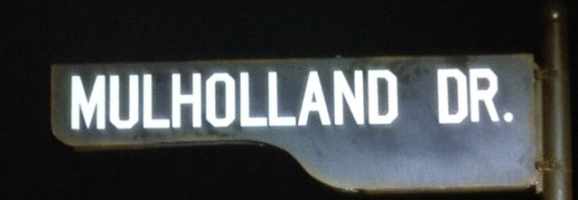
My first viewing of Mulholland Drive was, it seems staggering to me now, also the first time I had encountered the beautifully surreal work of David Lynch. To those of you familiar with Lynch’s considerable catalogue of mystical film and television work (not to mention his forays into music) I hope you will agree with my sentiment that, to any film fan and in my case a ‘Lynch newcomer’, the film is undoubtedly one of the most confusing, provocative, and brilliant pieces of cinema that has ever graced the silver screen. The inspiration for this article came some time after an intense romance with ‘memory films’, a phase started by Christopher Nolan’s sublime and quite perfect Memento (and watch this space for more articles on this particular masterpiece too)! Soon after came a fascination with Fight Club, Brazil, and Eternal Sunshine of the Spotless Mind, to name but a few films that all deal with one primary theme: identity. More specifically, they consider what it means to lose track of who you are when memory is called into question, and in doing so make full use of the unreliable narrator to align the viewer’s perspective with the characters’ own confusion.
Here I look at the visual representation of memory in Mulholland Drive, and I have built this article around my proposal that Lynch depicts the protagonists’ act of remembrance to demonstrate both a wider-reaching memorial to classical Hollywood, and a critique of the contemporary Hollywood film industry. Lynch’s own brand of cynicism in the film, succinctly described by critic J. Hoberman as, “a poisonous valentine to Hollywood” (Points of no Return, 2001) is established through his adoption and rejection of various generic tropes of the art film. In this regard I would also stress that viewing this film is itself ‘voyeuristic’ in nature. That is, establishing a narrative voice within Mulholland Drive is important in demonstrating that the protagonist Diane represents an omniscient narrator who privileges us to her memories. However, Lynch’s infamously confusing films frequently travel down paths we don’t expect them to, and this highlights a conflict between authorial control and audience expectation. The narrative voice in this film is not so much misleading as it is cruelly-intentioned in manipulating audience expectations of the plot and characters, and in this sense I aim to show how we effectively become complicit with Diane’s misdeeds. The main argument here is that contemporary cinema continually influences and is influenced by early 21st century film, a movement in which Lynch is an integral figure. I will use Mulholland Drive as an example of how divergence between eras of Hollywood is configured and visualised.
Lynch as Hollywood Critic and Devotee
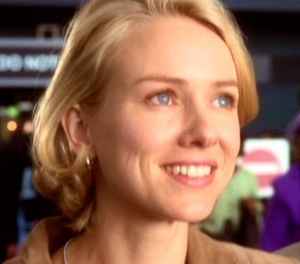
In demonstrating exactly how Lynch visualises memory, it is crucial to outline what he is visualising and why he chooses it as his subject. The physical representation of memory is by definition an impossible task. How do we display, as David MacDougal poses: “the mind’s landscape, whose images and sequential logic are always hidden from view” (Transcultural Cinema, 231)? Memories cannot literally be rendered on screen; all film can do is offer an interpretation of memory. With this in mind I further suggest that Mulholland Drive is an exercise in visualising subjectivity, in which the film is highly self-conscious of: its own contemporary Hollywood origins; the modern era’s ancestral classical Hollywood period; and of its (contemporary Hollywood’s) own narrative structure.
Scholar Paul Grainge writes that:
“the ‘memory film’ can be said to explore the means by which the past exerts a contextual bearing on contemporary life and its structures of belief” (Memory and Popular Film, 12)
and I would develop this idea in relation to Lynch’s observance of classical Hollywood to inform his work and build our expectations of his film. The first suggestion that memory is being witnessed occurs at the film’s beginning. As the jitterbug dance sequence ends three human-shaped blurs are superimposed on-screen. They fade out, and are replaced with a high exposure shot of a young blonde woman, resplendent in a silver dress. As an off-screen crowd begins to cheer, two other figures come into focus, revealed to be an elderly couple flanking the blonde woman– I will refer to this as the ‘fame sequence’. With excessive light exposure the trio ‘glow’ unnaturally, suggesting a unity between them indicating an almost familial closeness. Interpreting this scene, and indeed Mulholland Drive as a whole, is helped if one looks at Lynch’s manipulation of the film’s paratext, in the form of clues provided inside early edition DVDs. The first clue reads: “Pay particular attention in the beginning of the film: At least two clues are revealed before the credits”. In Lynch fan circles this two-part puzzle has a popular solution: the first is that Diane won the opening jitterbug contest and was then put on the path to stardom; the second is that the room shown after the opening shot is the same one in which Diane falls asleep at some point and ‘becomes’ Betty. While these clues offer a glimpse of clarity on Mulholland Drive, it is more significant to note Lynch’s control over the audience’s perception by offering said clues, in that Lynch wants to inform how to interpret his film but refrains from a full explanation in order to let the film speak for itself. I would even suggest that Mulholland Drive itself is a manipulated paratext of Hollywood. That is, in an industry where audience satisfaction from film watching is critical to its success, this particular film actively frustrates our ability to define any narrative linearity. In this sense Lynch wants the audience to feel uncomfortable by disrupting the viewing experience, but simultaneously invokes a perverse voyeuristic pleasure in watching Diane’s twisted story unfold.
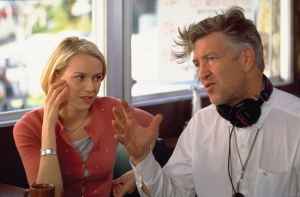
In terms of the viewer being a subjective witness to Diane’s mind, one scene most effectively highlights how Lynch structures the narrative to represent the chronology of her memories; her surreal arrival in L.A. under the Betty persona. This scene is critical in raising audience expectations, and has significant ramifications for how we perceive the characters involved thereafter. Shortly after we witness the then-unknown brunette (Rita) narrowly avoid assassination on Mulholland Drive, the film makes a shift in setting and lighting as Betty is introduced. Exiting the airport to sunshine, the same blonde woman from the opening scene – accompanied also by the same old couple– is framed in a close-up shot, lit with soft lighting that gives her an almost ethereal glow, face and hair glowing like the L.A. sunshine, as shown in the picture at the top of this section.
However, where we would expect these familiar characters to provide continuity (in the sense that we continue following their journey) the opposite is true. In this scene the characters are saying goodbye, and presumably after only a short time together – as the old lady, revealed to be called Irene, says: “It’s been wonderful travelling with you Betty”. If then the airport farewell is a flashback to before the opening fame sequence, then the temporal status of that opening scene is disrupted. That is, we are frustrated in our attempt to order and understand events, a process further impeded by the surreal behaviour which the characters exhibit. The exaggerated sentimentality of Betty’s speech, for example: “I was so excited, and nervous. It sure was great to have you to talk to!” conveys an endearing naivety, yet there is tangible pessimism in her farewell with Irene that belies our expectation of an actress set for success:
“Irene: Remember, I’ll be watching for you on the big screen.
Betty: [smiling] Okay, Irene! Won’t that be the day?”
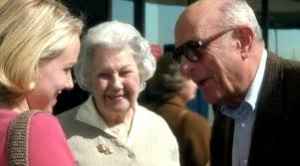
This is Lynch at his most cynical in characterising the film industry, and L.A. as an industrial entity: if L.A. is indeed the ‘City of Angels’, then Betty’s picturesque, ‘angelic’, presentation here is arguably Lynch’s personification of the Hollywood dream; or at least his interpretation of how the dream is held by aspirational starlets. Just as an expectant Betty arrives hopeful of a celebrity lifestyle, so too does the viewer watch hoping that Betty receives the rewards she longs for. Yet in this mutual expectancy we must not overlook the film’s suggestion that this woman, embodying the ideas of hope and ambition through a perfectly tailored image and attitude, represents the divergence from narrative linearity represented by the couple. To support this I propose that the characters’ farewell is symbolic of the shift in film style from classical to contemporary Hollywood, the old couple as ‘echoes’ of classical Hollywood ushering in a new era (and as a side note, consider also that the actress portraying Irene, Jeanne Bates, was herself a working actress in 1940s classical Hollywood). In this regard we must consider the lengths Lynch goes to in distinguishing his work from his contemporary peers.
Mirrors and Identity Creation
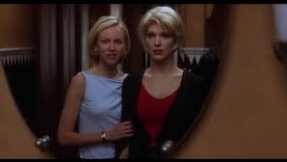
Lynch’s use of mirrors in Mulholland Drive, as both narrative device and symbolic object, demonstrates both the duality of the protagonists and how he draws parallels between old and new Hollywood. In the scene where the amnesiac brunette assumes the name ‘Rita’ there are two core components that highlight how Lynch creates a link between Hollywood eras. The first is what the name Rita suggests, and the second is her action of viewing the name on a film poster in a mirror’s reflection. The poster in question is for the 1946 noir Gilda starring the actress Rita Hayworth, which the image at the top of this article depicts. Far more than being a tribute to a star of the classical era however, this action of assuming an identity appropriated from a reflection indicates the degree of self-reference by both Mulholland Drive itself and by Diane’s delusion. If viewers:
“[enjoy movies] not because they think the movie is real, but because they do not include their knowledge of the reality status of the movie in their appraisal” (Fantasy and Imagination 109)
then Hollywood’s popularisation of performance and acting as entertainment is one trope of the industry that Lynch certainly adheres to in order to engage his audience. That is, he acknowledges the ‘layering’ that occurs in characterising the film’s protagonists, wherein Betty and Rita respectively may also be considered as an actress in reality (that is, Naomi Watts and Laura Harring respectively) playing a character, who in turn plays another character. Lending further meaning to the duality of the name ‘Rita’ is the process of disguising her to avoid unwanted attention. Adorned with a blonde wig – a colour adopted by Hayworth to distinguish her and further her career (Red Heads 1941) – Rita’s identity transition now becomes a physical aping of the actress. Her new hair style and colour are similar to Betty’s – with the exception of a parting on the opposite side of Rita’s face, as shown in the above picture – and dark clothing that contrasts with the light colours worn by Betty. In mimicking not only an image of a classical star but also Betty, Rita’s character acts as a scapegoat for identity change, facilitating Diane’s desperation to escape her past. Indeed she remarks to Rita of this prolific appropriation of identity: ‘It’ll be just like in the movies. We’ll pretend to be someone else.’ Here Lynch again demonstrates the self-referential and entertaining spectacle of performance, acknowledging that his audience craves a fiction. Not a fiction that they can necessarily relate to, but one in which the responsibility on viewers to infer meaning from the film is removed, by way of characters who themselves must navigate the disjointed narrative in order to justify their presence and behaviour in the film.
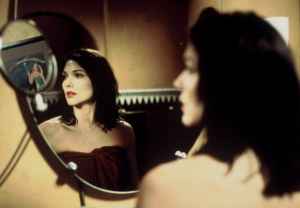
Film theorist David Bordwell compares the behaviour of protagonists from classical Hollywood and from the contemporary art film:
“If the Hollywood protagonist speeds towards the target, the art-film protagonist is presented as sliding passively from one situation to another.” (Narration in the Fiction Film 207).
There are numerous examples of such characters from both eras: The Searchers (1956) for example depicts John Wayne relentlessly chasing his quarry, while Blade Runner (1982) features a slow step-by-step procedure of investigation. What is confusing in Mulholland Drive however is that Betty and Rita do not truly exhibit either of these behaviours: not only do they not know how to begin to explain Rita’s amnesia, but due to the story being a result of Diane’s delusion there is nowhere to begin. One particularly useful description of the film comes by way of scholar Jennifer Hudson,who states that Mulholland Drive functions like a ‘”Möbius Strip” (Quarterly Review of Film and Video 18-24) – a structure with no beginning or end that continually loops back on itself. This analogy is accurate in the sense that we have no definitive way of determining which of Diane’s version of events is accurate, how many versions there are, or if they happened at all. As a prime example, note the scene where the mysterious blue box is finally opened, only for the camera to suddenly plunge into the box’s black depths and ‘reappear’ in another reality (or is it reality?). Hudson goes on to describe the film as:
“a spiral, a circle, a series of unexplained events that blur and destabilise traditional concepts of intellectual sense” (Quarterly Review of Film and Video 17).
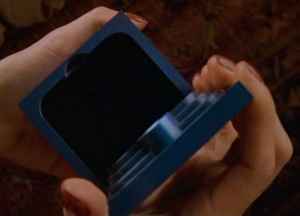
Whilst I agree that the film can be viewed as ‘circular’, I would go further than Hudson’s assertion that the film is simply a series of movements that drive the film forward. Instead I would suggest the contrary; like much of Lynch’s work, this film functions as a meandering path with narrative ‘forks’ that often lead nowhere, with even fewer leading to the vaguest conclusion. Mulholland Drive’s narrative loops on itself in the final third of the film, where Betty is exposed as a creation of Diane, and Camilla invites her to a gathering at her and fiancé Adam Kesher’s house. Lynch, at this stage in the film having acknowledged the duality of the protagonists and moving the film out of Diane’s fantasy into what could be called ‘reality’ (that is, outside of her mind), reinvigorates Diane’s appearance to resemble Betty once more. It should be noted also that Diane arrives by limousine at the same spot where Rita avoided assassination, another indication of the circular temporality which Lynch asserts over Diane’s story. Hainge writes:
“The space in which [Lynch] films operate might be said to be specular and not prismatic, their content reflecting back on itself rather than refracting outwards and attempting to create a connection with the viewer.’ (The Cinema of David Lynch 138)”.
This self-reflection is what defines Mulholland Drive’s exploration of memory; both the memory of its fallen starlet Diane, and the memory of how the linearity of Hollywood filmmaking is disrupted by the presence of the memory film. In relation to my argument that Lynch’s audience are voyeurs observing Diane’s mind, it is worth considering Truffaut’s Les quatre cents coups/The 400 Blows (1959). Telling the story of Antoine the film encourages us to invest in it from the boy’s perspective, achieving this by placing him in every scene. Whilst this shows that the film is ‘his’ story, it does not suggest any degree of Antoine’s omniscience in the sense that Antoine has any control over what we see; that is, Truffaut was physically directing the cameras that captured Antoine’s actions. Similarly I would suggest that the only reason we see MD’s content – itself made up of Diane’s own fantasies and memories – is because we are entitled to by Lynch. Bordwell’s definition of art cinema contains a set of tropes by which art films distinguish themselves, a significant aspect being authorial expressivity: ‘the means whereby the art film unifies itself’ (Film Criticism, 718). In this sense we may consider Lynch as part of a tradition in which reality is questioned through visualisation of memory in early 21st century films. In light of the film’s self-conscious manipulation of audience expectations, Memento (2000) is a useful informant on Mulholland Drive, in the sense that both films use memory loss to facilitate a sequence of events that seek to visualise the subjective.
In placing Lynch within the movement of memory films challenging mainstream Hollywood however, care must be taken in distinguishing the naivety of being ‘hopeful’ from the pragmatism of being ‘expectant’ of Mulholland Drive delivering on its proposal of Betty’s stardom; indeed the last thing one would expect from a Lynch film is a clear-cut narrative told through conventional methods. His film Lost Highway (1997) for example also demonstrated his ‘authorial expressivity’ in undermining audience expectations, dispensing with and replacing its lead character midway through. Such is the director’s “Lynchian” (The Art of the Ridiculous Sublime, 146) flair for the surreal that Lynch audiences come to ‘expect the unexpected’. In this regard Lynch’s exertion of control over how audiences come to distinguish his films from the work of others in the film industry is as much a metafictional theme of MD as is the awareness that we derive pleasure from not entirely comprehending his films. Bordwell writes that the “pensive ending” of art films:
“acknowledges the narration as not simply powerful but humble”, in turn suggesting that: “the narration knows that life is more complex than art can ever be…the only way to respect this complexity is to leave causes dangling and questions unanswered’ (Narration in the Fiction Film, 210).
What Bordwell highlights here is art cinema’s acknowledgement of the impossibility of narrative coherence, which is to say that it deliberately contorts the content and order of events in order to distinguish itself from the classical era built on linearity.
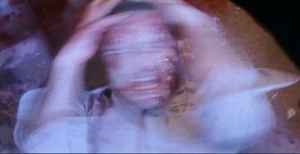
Closing Thoughts
Mulholland Drive is not just a visualisation of Diane Selwyn’s memory of her career; it is an acknowledgment and visualisation of the divergence between classical Hollywood cinema and early 21st century independent cinema, a movement in which Lynch defiantly flouts convention. In interpreting this film one must be aware of how viewer expectations of generic tropes are in conflict with Lynch’s authorial control and manipulation of his subject. This is evidenced by two aspects. The first is Lynch’s cunning in enforcing the audience to retroactively view Diane’s memories of the Betty/Rita relationship as flashbacks. That is, only when Rita opens the mysterious blue box and Diane’s true self is revealed do we realise that our character interpretation is skewed. Yet this is precisely Lynch’s intent in allowing the audience to subjectively view Diane’s mind; he does not want us to empathise with the character that killed Camilla out of jealousy, because Diane herself cannot come to terms with it. In relation to film representing memory, Pam Cook writes of:
“The idea that we might prefer to forget the past, or that memory is not necessarily a reliable way of accessing the past’ (Screening the Past: Memory and Nostalgia in Cinema, 98)”.
Though on the surface Mulholland Drive’s story is a ‘veneer’ under which Diane’s struggle to accept her past actions is of interest, her unreliability is more significant in the sense that Lynch strategically employs the character to disrupt what the audience expects of an unreliable narrator. Wayne Booth famously defined the unreliable narrator:
“I have called a narrator reliable when he speaks for or acts in accordance with the norms of the work (the implied author’s norms), unreliable when he does not’ (The Rhetoric of Fiction, 158)”.
In this regard Diane’s unreliable character is not placed simply to be entertaining; rather she serves as a host for Lynch’s disruptive intent through which he defines the film’s forking narrative structure.
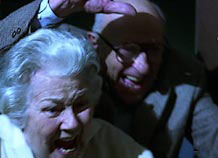
The second aspect that illustrates the boundary between classical and contemporary Hollywood is linked to my earlier proposal that Betty (in the airport scene in particular) represents a divergence from classical Hollywood. We should consider that in framing Betty as a creation of Diane’s delusion:
“Lynch [recognises] the chaos of contradictions – the fact and the fiction, the desire and revulsion – that go into making any self.’ (The Cinema of David Lynch, 75)”.
This is illustrated by how the film is broken up into vignettes that shift in plot and tone, their colour noticeably waning and brightening in a reflection of Diane’s state of mind at any point. The best example of this is her suicide scene, Lynch using strobe lighting, smoke, frenetic fast-cuts and explosive noises to visualise her internal strife. In bringing back the old couple to terrorize Diane before death and inverting their earlier caring role also, Lynch exploits Diane’s suicide to represent the contrasts that exist between the old and new of Hollywood. Indeed Betty, when defining her ambitions, even suggests that there is a certain prestige belonging only to classical Hollywood stars:
“I’d rather be known as a great actress than a movie star, but sometimes people end up being both”.
Such divergence between ‘actress’ and ‘movie star’ underline the cynicism which Lynch directs at a hypocritical film industry, one in which he defines both his films and beliefs through his unique talent for disrupting convention.
For further memory film weirdness, see:
– Terry Gilliam’s Brazil (1985) which deals with similar ‘glamourized’ dream-matter that at once captivates and perturbs the viewer.
– Michael Gondry’s Eternal Sunshine of the Spotless Mind (2004) also plays out memories ‘within’ the mind of the protagonist.
Works cited
Booth, W. C. (1961) The Rhetoric of Fiction, Second Edition, (Chicago: University of Chicago Press)
Bordwell, D. (1985) Narration in the Fiction Film, (London: Methuen & Co. Ltd.)
——– The Art Film as a Mode of Film Practice’ (1979) in Film Criticism, 4:1 pp.716-724 (Pennsylvania: Allegheny College)
Chapman, J. (1941) ‘Red Heads’, in Chicago Daily Tribune, (Chicago: Chicago Daily Tribune)
Cook, P. (2004) Screening the Past: Memory and Nostalgia in Cinema, (Abingdon: Routledge)
Copjec, J. (2002) Review of ‘The Art of the Ridiculous Sublime: On David Lynch’s Lost Highway’ in Umbr(a): Sameness, pp.146-147. (Buffalo: Umbr(a) Journal)
Hainge, G. (2004) ‘Weird or Loopy? Specular Spaces, Feedback and Artifice in Lost Highway’s Aesthetics of Sensation’ in E. Sheen and A. Davison (eds.) The Cinema of David Lynch: American Dreams and Nightmare Visions (London: Wallflower)
Hoberman, J. ‘Points of no Return’ (2001) <http://www.villagevoice.com/2001-10-02/film/points-of-no-return/>
Hudson, J. (2004) ‘”No Hay Banda, and Yet We Hear a Band”’: David Lynch’s Reversal of Coherence in Mulholland Drive’ in Quarterly Review of Film and Video 56 (1), pp. 18-24
MacDougall, D. (1998) Transcultural Cinema, (Princeton: Princeton University Press)
Rombes, N. (2004) ‘Blue Velvet Underground: David Lynch’s Post-Punk Poetics’ in E. Sheen and A. Daviso (eds.) The Cinema of David Lynch: American Dreams and Nightmare Visions pp. 61-76. (London: Wallflower)
Valkenburg, P. M. and Peter, J. (2006) ‘Fantasy and Imagination’ in Bryant, J. and Vorderer, P. (eds) Psychology of Entertainment, (Abingdon: Routledge)
What do you think? Leave a comment.











It was some sort of soul transmigration.
The movie is awesome, though at times, it felt like a soft core pron movie (and dont get me wrong I loved this), but when I was reaching the end, well, it just blew my mind. I am also a huge fan of Twin Peaks, so I loved the music on it.
Lynch is where I draw my line at weirdness. I love Aronofsky. I love Pi and Requiem and Swan and almost everything he touches. Those are weird but they actually have something to say. What is Lynch trying to get across in his movies? Are they just dream explorations?
This is the eeriest movie I have ever seen and it wasn’t the scenes that one might expect. I wasn’t afraid when the limo pulled over and stopped. I wasn’t even concerned when they sneaked into the house and found the dead body. It was just the weirdness and strangeness about everything and for the most part, I can’t understand why that would creep me out so much. Like the opening sequence of the Jitterbug contest, for instance, I can’t understand why that felt so eerie but it did. Then there were the two old people, who she met on the plane trip from Canada. The way they were just sitting there, in the car, smiling at each other and the way the old woman was stiffly and mechanically hitting the old man’s leg over and over like a defective robot. I don’t even want to talk about the thing behind the dumpster. All I’m going to say about him is, when that man dropped dead from freight, I almost did too, seriously. NO JOKE! Then there was the old crazy psychic woman, with the extensive plastic surgery. If what she said didn’t scare me, the way she looked sure did. The cowboy made me a little uneasy but just because he was weird and I didn’t know what to expect from him. However, he did seem like somebody that you might not want to fvck with. Him being the one to tell Diane “time to wake up, pretty girl” or whatever he said and his presence in that scene, didn’t help matters. Then there was the “everything is an illusion” scene, with the singing lady dropping dead, while the singing continued. Again, don’t know why, because I understood that she was suppose to be lip syncing and the point was that it was all an illusion but that was still just a little creepy.
The strange thing is, most horror movies don’t scare me at all. I can watch a slasher film and it probably wouldn’t bother me but these type of suspenseful, weird and crazy crap, will give me all sorts of goose bumps.
A lot of the eeriness of Mulholland Drive lies in what might be lurking or going on just around the corner, rather than what is actually going on in front of the camera. An example of this would be that fantastically constructed scene where Betty and Rita wake up in the middle of the night/early hours of the morning after that incredible love making session and take a cab to the Silencio club. The atmosphere in that scene, and the looming threat of what we don’t know, is absolutely terrifying and more suspenseful than most of the scenes in any horror film. We’re itching to know just where they are going and why they are going there.
If I’m honest I still hide behind my hands at the diner scene with the homeless person’s first appearance! And I think that that contrast with more typical ‘jump scares’ and unsettling, dread-laden mystery makes for a fantastic cocktail of suspense and paranoia, to a degree. Thanks for reading and commenting!
Oh yeah, but that’s one of the reasons I love it. It’s not just a dreamy-mystery-thriller-mind crap it’s also an effective horror film.
Absolutely, the surreality and moodiness of Mulholland Drive is pretty unparalleled in film, and I totally agree with it being more scary than a full-blown horror. The sheer mystery is just spine-tingling! Thanks for reading.
Another film of Lynch’s which critiques typical Hollywood is Inland Empire, and is, arguably, even more trippy and confusing than Mulholland Drive. Still, need to rewatch both of them again soon. Great writing on this article.
Thanks Matthew, it was a lot of fun! I still get chills thinking about Lynch’s neo-noir films, there’s just something so incredibly unsettling about them.
Great job Sam. I enjoyed the article.
I have always loved that film most of all of Lynch’s pieces.
Thank you Jamie! I think I might agree with you on that one – I’ve seen Lynch’s films out of chronological order, but Mulholland Drive is the one that really sticks with me, which I would attribute to it being *more bizarre (if that’s even applicable to Lynch!) than his other work. Thanks for reading and commenting.
Very interesting take on the concept of identity in Lynch films. I agree with what you wrote about the clash between old Hollywood and new Hollywood. If only we could get inside Lynch’s mind to unveil exactly what the moral is of his films. Perhaps there’s none at all.
Aha there are just so, so many questions to ask of the man! The Cowboy always interested me as a type of Angel/Devil type character – and I suppose you could almost take his appearance as some kind of homage to the Westerns of old. Thanks for reading!
You have to watch David Lynch films more than once to appreciate them. I am one of these people. My first viewing of this film I absolutely hated it, seven years later my second viewing did not disappoint. It is now probably my favorite David Lynch film, next to Blue Velvet.
I’m inclined to agree with you! I finished Mulholland Drive for the first time and was glad to be rid of it-then I mulled it over a while and got the ‘lightbulb moment’ where it seemed to make some sort of sense. That said, each viewing is a reward itself as more and more themes and plot points are revealed!
Thanks for reading.
This is my favorite film of all time!
Definitely going to be indulging in a Lynch-marathon over Christmas! Great article, Sam.
A Lynch-marathon is more than a substitute for the garbage on Christmas TV these days – good choice! Thanks for reading.
His commentary on Hollywood hypocrisies could easily be applied to our notions of freedom and democracy when applied to the rest of the world.
Good piece.
What’s the meaning of the film? A girl deals with her paranoia by inventing a new self. An aspiring actress – naïve and new in town – performs like a mature and experienced star. And we, mesmerized, can’t take our eyes off the screen. Let’s be honest here: we, like the characters in the film, are all dreaming with intent. Mulholland Dr is like cinema itself: both a reflection of our dreams and a refuge from our reality.
Thanks, Sam Walker, for this compelling analysis of this creepy film. ++ For me MD at the very top of the list of the films that Lynch has directed.
Thank YOU Ben! It’s a fascinating film to analyse, and it still gives me the creeps when I find myself watching it for the umpteenth time! Thanks for reading.
Really enjoyable article. I recently rewatched Mulholland Drive after several years, having watched it and totally not understanding it. This is an excellent analysis, and really helps in cracking its key themes open!
Thanks Hannah, I appreciate it! It took many viewings of Mulholland Drive to even begin to understand some of its themes – and I believe I’m still a way off understanding the whole film and its subplots. Mind you, I think that’s half the fun in watching! Thanks for reading.